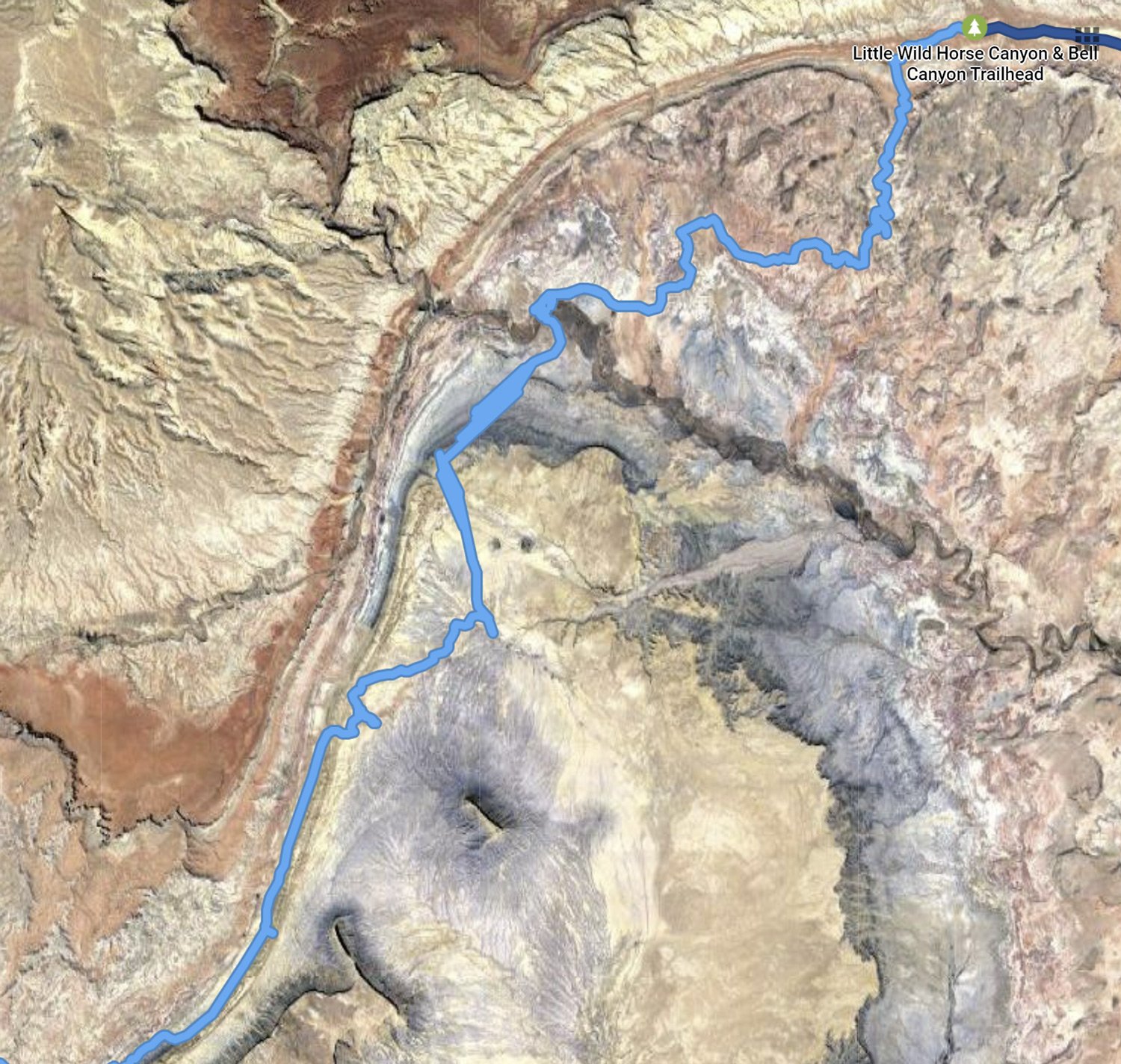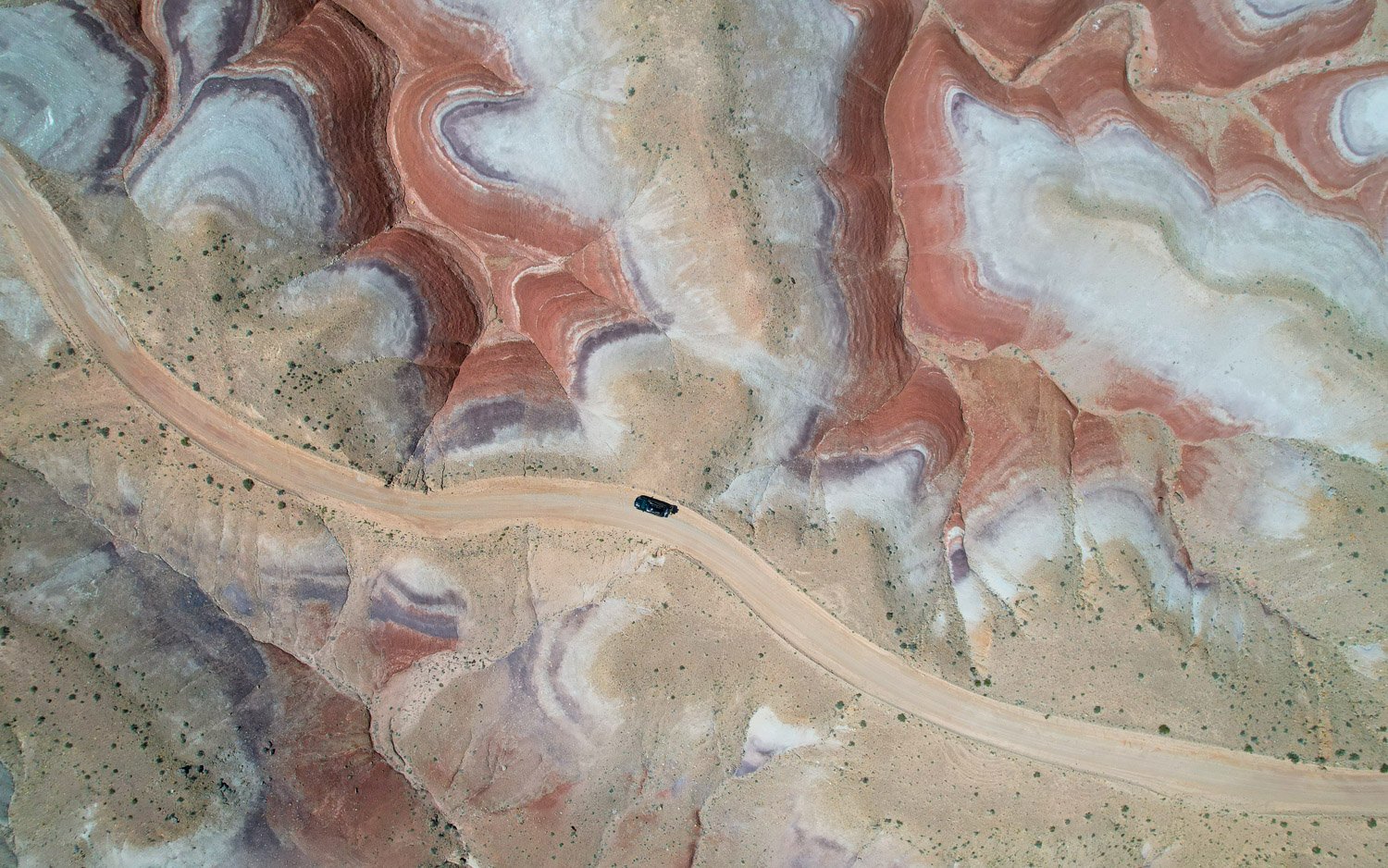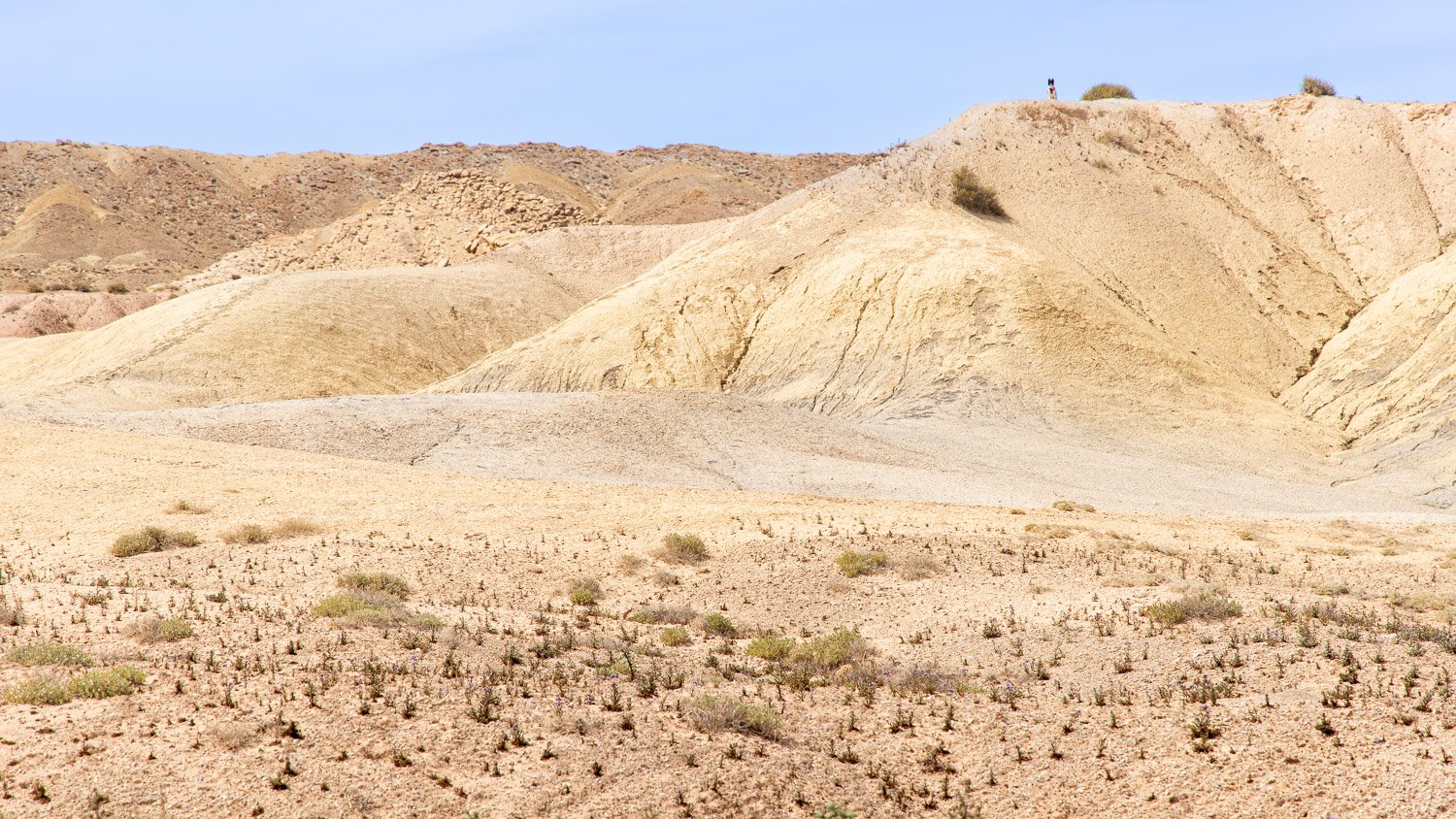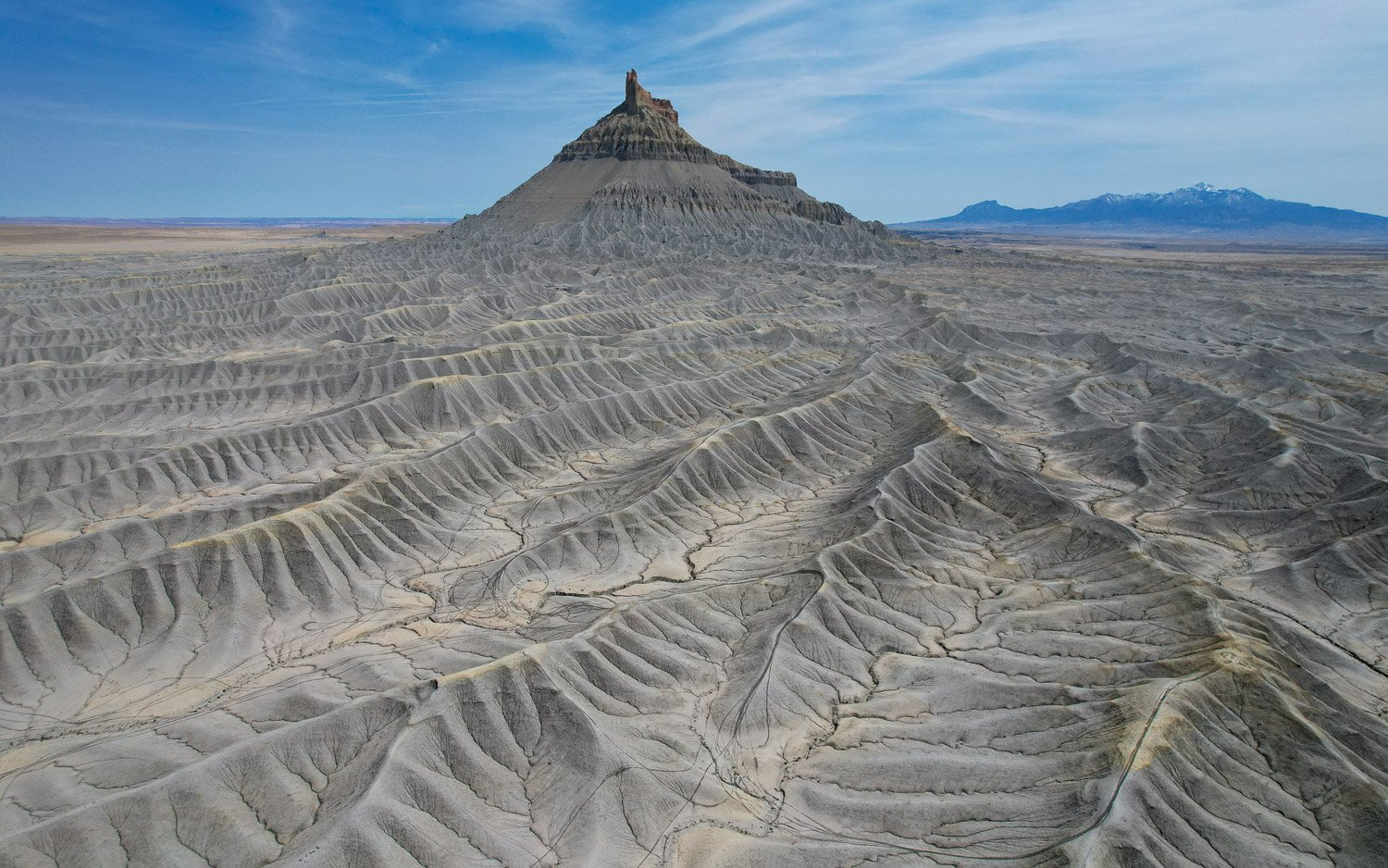After leaving San Rafael Reef and the Factory Butte area, I headed up a favorite backroad I’d ridden twice before on the east side of Capitol Reef National Park. So why are there reefs in the middle of the desert? As pioneers traveled, the long folds in the planet’s crust were impossible to go over and difficult to get around. They recalled coral reefs that impeded ship travel. Here, the nearby white domes of Navajo Sandstone led the Mormon settlers to think of the new dome in the national capitol, and so it was named Capitol Reef.
Cottonwood in the Fremont River Canyon, Capitol Reef National Park, Utah
Capitol Reef is part of the 100 mile Waterpocket Fold, and the long, narrow park runs along this geologic feature. Cathedral Valley is a remote section in the northeast part of the park filled with monolithic features that rise out of the desert floor like gothic cathedrals. Two of these are named Temple of the Sun and Temple of the Moon. As I planned the trip, I was not thinking of going this far west or returning to this park. However, as I studied the calendar, I saw I’d be near these features around the time of the new moon—the darkest nights in one of the darkest places. The temples could be dramatic foreground elements for photos. I’d just need clear skies. Write it in the itinerary and hope for the best.
You can only camp in designated campgrounds in national parks. However, Cathedral Valley Road runs mostly on Bureau of Land Management property next to Capitol Reef, and boondocking on BLM land is usually no problem. I figured I could find a camping spot near Temple of the Sun, and bingo, right outside the park boundary was a nice site for the night. In the Google Map below, Park land is in tan, and my camp was on the white BLM land a mile from Temple of the Sun.
After finding camp and making dinner, Chance and I explored around the two monoliths looking for potential spots to find in the dark. The blue sky held promise for clear night skies. The dreams I’d planned were clicking into place.
Temple of the Sun, Capitol Reef
After some good sleep in the cool desert night, it was time. The clouds had stayed away. The Milky Way arced across the sky. Constellations beamed down. Even on a moonless night, stars alone provided an amazing amount of light. And the sight was wonderous.
Temple of the Sun
Chance laid by the car while I walked around Temple of the Sun, hoping Scorpio stayed in southern sky and didn’t send any relatives to the ground. An occasional shooting star seemed to provide music in the silence. Time to take a short drive over Temple of the Moon and capture some image there. Very soon, some faint light started glowing on the horizon. A few misty clouds began forming.
Temple of the Moon
Just ten days before I’d proclaimed one of my favorite verses at the Easter vigil:
And so it happened:
God made the two great lights, the greater one to govern the day, and the lesser one to govern the night; and God made the stars.
God set them in the dome of the sky, to shed light upon the earth, to govern the day and the night, and to separate the light from the darkness.
God saw how good it was.
As the stars began to fade, it was time to get back on Cathedral Valley Road and head toward the highway. There were still plenty of stops to enjoy the morning light and watch the park features waking up.
The road climbed over Bentonite hills before getting to the highway. Some of the Native Americans called this area “Sleeping Rainbow.” As the sun was reaching the horizon, the cloud cover increased. Time for breakfast. The clear skies, the night, and the stars were gone. And it was very good.

















